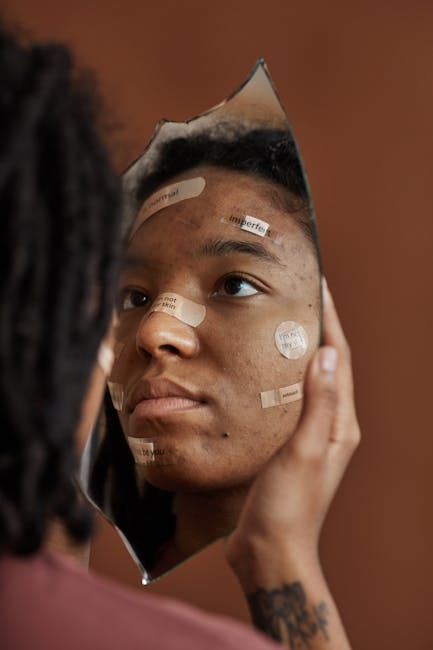Transforming insecurity into a sense of self-worth is like turning a stormy sea into a calm, clear lake—it’s challenging, but entirely possible. Insecurity often feels like a shadow that follows you everywhere, whispering doubts into your ear. But what if you could quiet that voice and replace it with one that cheers you on? Stick around, because this post will show you how to understand your insecurities, tackle them head-on, and build a rock-solid sense of self-worth.
Key Takeaways
- Insecurity stems from personal, professional, and relationship challenges.
- It’s often rooted in past experiences and societal pressures.
- Overcoming insecurity requires self-awareness, positive thinking, and achievable goals.
- Building self-worth involves embracing imperfections, surrounding yourself with positivity, and transforming your mindset.
Understanding Insecurity
What are insecurities?
Insecurities are those nagging feelings of self-doubt and inadequacy. They make you question your abilities, your worth, and even your relationships. It’s like carrying a backpack full of rocks—you feel weighed down, even when there’s no real reason for it.
Everyone has insecurities. They might show up as fear of failure, body image issues, or doubts about your skills. But here’s the thing: insecurities are not permanent. They’re just thoughts, and thoughts can be changed.
Common causes of insecurity
Personal insecurities
These often stem from comparing yourself to others. Maybe you feel like you’re not smart enough, attractive enough, or successful enough. Social media doesn’t help—it’s like a highlight reel of everyone else’s best moments, making you feel like you’re falling behind.
Professional insecurities
Ever felt like a fraud at work, even though you’re qualified? That’s imposter syndrome, a common professional insecurity. It can make you second-guess your skills and hesitate to take on new challenges.
Relationship insecurities
Relationships can be a breeding ground for insecurity. You might worry about being abandoned, not being good enough for your partner, or even being too much. These fears can strain even the healthiest relationships.
The consequences of insecurities
Unchecked insecurities can lead to anxiety, depression, and even physical health issues. They can hold you back from pursuing opportunities and enjoying life. Imagine standing on the edge of a pool, too afraid to jump in—that’s what insecurity does.

The Root of Insecurity
How experiences shape insecurity
Childhood experiences
Your early years play a huge role in shaping your insecurities. Maybe you were criticized a lot as a child or felt like you had to earn love through achievements. These experiences can leave lasting scars.
Societal pressures and expectations
Society loves to set impossible standards. Whether it’s beauty, success, or relationships, there’s always a bar you’re supposed to reach. And when you don’t, insecurity creeps in.
Recognizing learned insecurity
Insecurity isn’t something you’re born with—it’s learned. The good news? If you can learn insecurity, you can also unlearn it. Recognizing this is the first step toward change.
The possibility of learning security
Think of self-worth as a muscle. The more you work on it, the stronger it gets. With the right tools and mindset, you can replace insecurity with confidence.

Steps to Overcome Insecurity
Confront your feelings
Identifying triggers
What sets off your insecurities? Is it a certain situation, person, or thought? Identifying your triggers is like turning on a light in a dark room—it helps you see what you’re dealing with.
Practicing self-awareness
Self-awareness is your secret weapon. It’s about noticing your thoughts and feelings without judgment. Techniques like journaling or self-awareness exercises can help you understand yourself better.
Challenge your negative thoughts
Reframing self-perception
Instead of focusing on what you lack, focus on what you have. For example, if you think, “I’m terrible at public speaking,” reframe it to, “I’m learning to improve my public speaking skills.”
Practicing positive affirmations
Positive affirmations are like planting seeds of confidence in your mind. Try saying things like, “I am capable,” or “I deserve happiness.” Over time, these affirmations can reshape your self-image. Learn more about their impact here.
Set achievable goals
Building confidence through small wins
Start small. Maybe it’s speaking up in a meeting or trying a new hobby. Each small win builds your confidence, brick by brick.
Celebrating progress
Don’t wait for perfection to celebrate. Every step forward is worth acknowledging. It’s like climbing a mountain—every step gets you closer to the top.

Building a Sense of Self-Worth
Embrace yourself as you are
Accepting imperfections
Nobody’s perfect, and that’s okay. Your imperfections make you human. Instead of hiding them, embrace them—they’re part of what makes you, you.
Focusing on strengths
What are you good at? What do you love about yourself? Focusing on your strengths shifts your mindset from “I’m not enough” to “I have so much to offer.”
Surround yourself with encouraging people
The role of supportive relationships
The people around you can either lift you up or drag you down. Surround yourself with those who believe in you and encourage your growth.
Letting go of toxic influences
Toxic relationships are like weeds in a garden—they choke your growth. It’s tough, but sometimes you need to let go to make room for healthier connections.
Transform your mindset
Using tools like free AI coaching
AI tools can offer personalized guidance to help you build confidence and self-worth. They’re like having a coach in your pocket, ready to help whenever you need it.
Practicing gratitude and mindfulness
Gratitude and mindfulness are game-changers. They help you focus on the present and appreciate what you have, rather than dwelling on what you lack. Learn more about these practices here.

Thriving Beyond Insecurity
The healing power of education and self-improvement
Learning new skills or diving into self-help resources can be incredibly empowering. It’s like adding tools to your toolbox, making you better equipped to handle life’s challenges.
Turning insecurity into confidence
Personal growth stories
Think of people who’ve turned their lives around. Maybe they started with nothing but built a successful career, or overcame personal struggles to find happiness. Their stories remind us that change is possible.
Learning from setbacks
Every setback is a setup for a comeback. Instead of seeing failures as the end, view them as lessons that make you stronger.
Living a secure and fulfilling life
Maintaining self-worth
Self-worth isn’t a destination—it’s a journey. Keep working on it, and remember that it’s okay to have off days.
Inspiring others through your journey
Your story can inspire others. By sharing your journey, you can show people that it’s possible to overcome insecurity and build a life full of confidence and joy.
Transforming insecurity into self-worth isn’t easy, but it’s worth it. It’s about taking small steps, celebrating progress, and believing in your ability to change. So, what’s your first step going to be?
FAQ: Transforming Insecurity Into A Sense Of Self-worth – Your Path to Inner Confidence
What does it mean to transform insecurity into self-worth?
Transforming insecurity into self-worth involves recognizing and addressing feelings of inadequacy or self-doubt, and replacing them with a sense of confidence, self-acceptance, and inner strength. It’s about shifting your mindset to value yourself for who you are, rather than focusing on perceived flaws or external validation.
Why do people struggle with insecurity?
Insecurity often stems from past experiences, such as criticism, rejection, or unmet expectations. It can also be influenced by societal pressures, comparisons with others, or internalized negative beliefs. These factors can lead to self-doubt and a lack of confidence in one’s abilities or worth.
What are the first steps to overcoming insecurity?
The first steps include self-awareness and acknowledgment of your insecurities. Reflect on the root causes of your feelings and challenge negative self-talk. Practicing self-compassion and focusing on your strengths can also help you build a foundation for self-worth.
How can mindfulness help in building self-worth?
Mindfulness helps you stay present and aware of your thoughts and emotions without judgment. By practicing mindfulness, you can identify negative thought patterns, reduce self-criticism, and cultivate a more balanced and accepting view of yourself.
What role does self-compassion play in this transformation?
Self-compassion involves treating yourself with kindness and understanding, especially during difficult times. It helps you recognize your shared humanity and reduces feelings of isolation. By being gentle with yourself, you can foster a stronger sense of self-worth and resilience.
How can setting boundaries improve self-worth?
Setting boundaries allows you to prioritize your needs and protect your emotional well-being. It demonstrates self-respect and helps you build healthier relationships. When you honor your boundaries, you reinforce your sense of self-worth and show others how you expect to be treated.
Can building self-worth improve relationships?
Yes, building self-worth can lead to healthier and more fulfilling relationships. When you value yourself, you’re less likely to seek validation from others or tolerate unhealthy dynamics. Instead, you can approach relationships with confidence, authenticity, and mutual respect.
What are some daily practices to enhance self-worth?
Daily practices include affirmations, journaling, practicing gratitude, and celebrating small achievements. Engaging in activities that bring you joy and surrounding yourself with supportive people can also reinforce your sense of self-worth over time.
How long does it take to transform insecurity into self-worth?
The journey to self-worth is unique for everyone and depends on individual circumstances and efforts. While small changes can happen quickly, building lasting self-worth is an ongoing process that requires patience, consistency, and self-reflection.
What resources can help in this transformation process?
Books, therapy, support groups, and online courses focused on self-improvement and emotional well-being can be valuable resources. Additionally, practicing self-care, seeking mentorship, and engaging in personal development activities can support your transformation journey.



